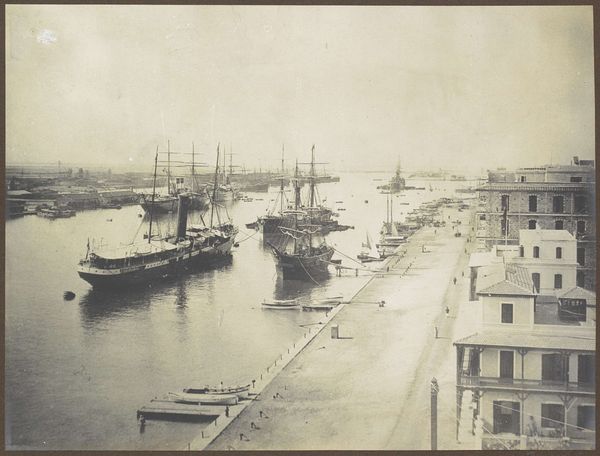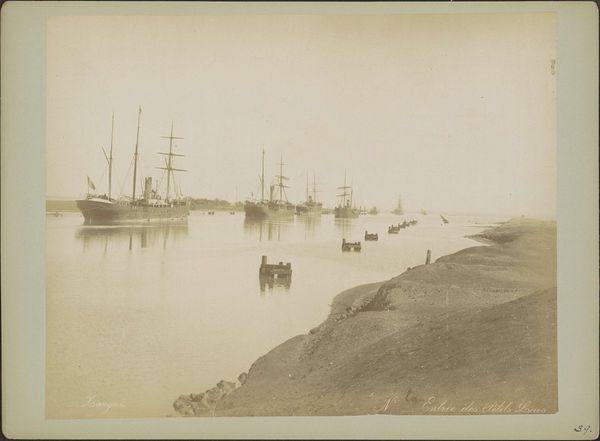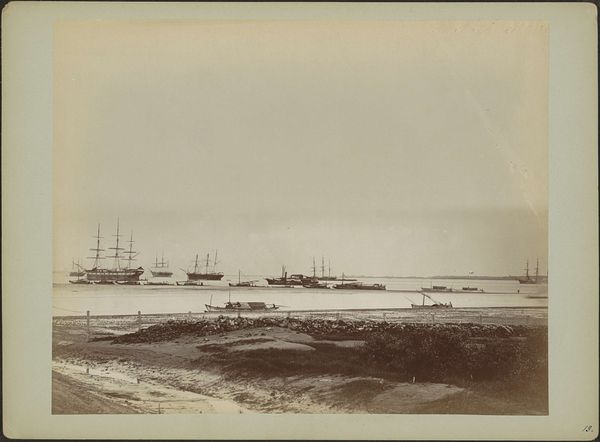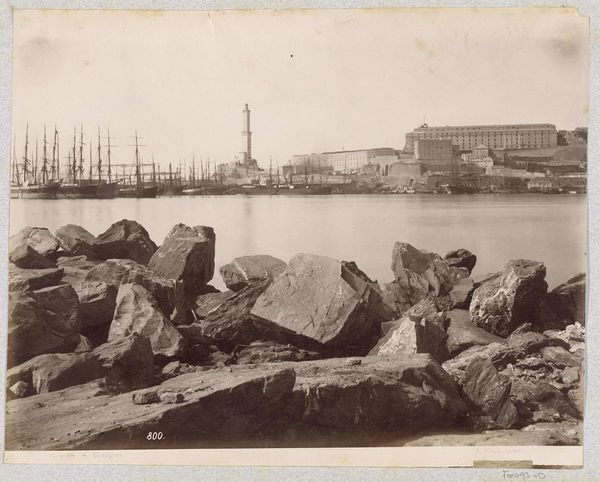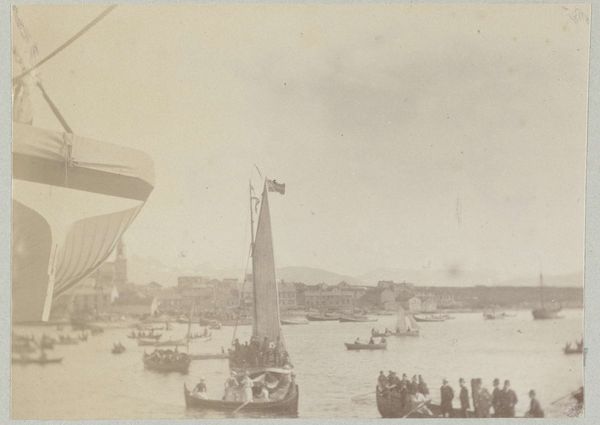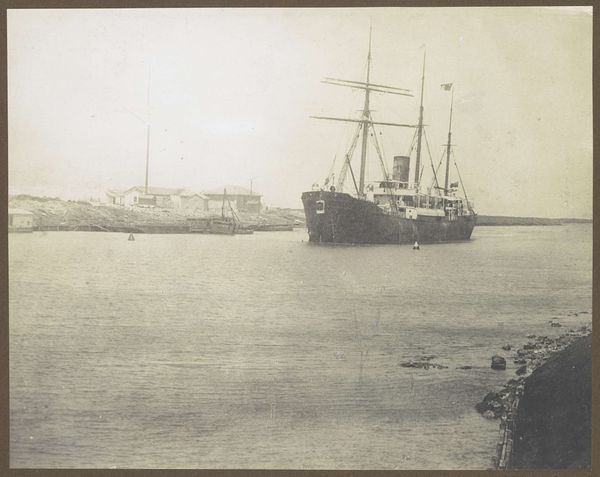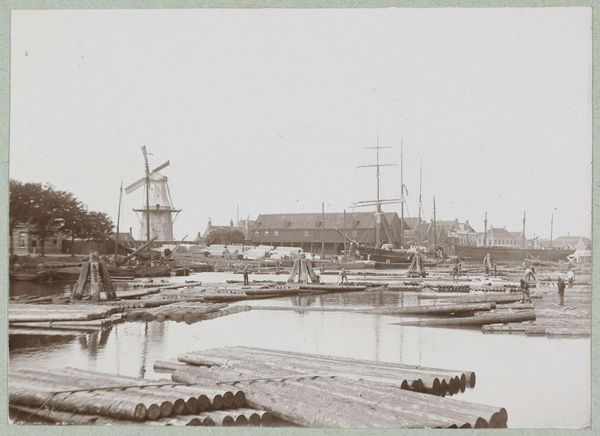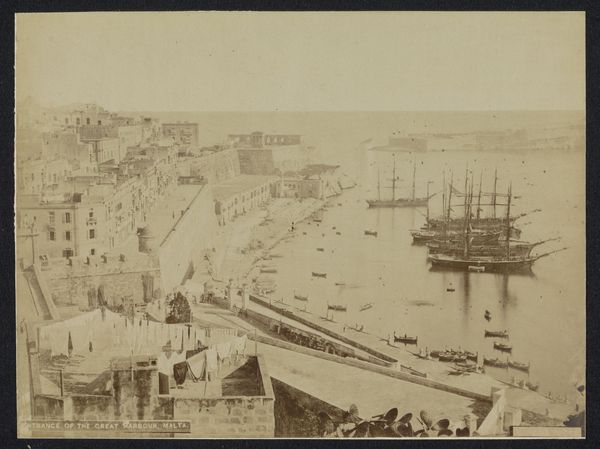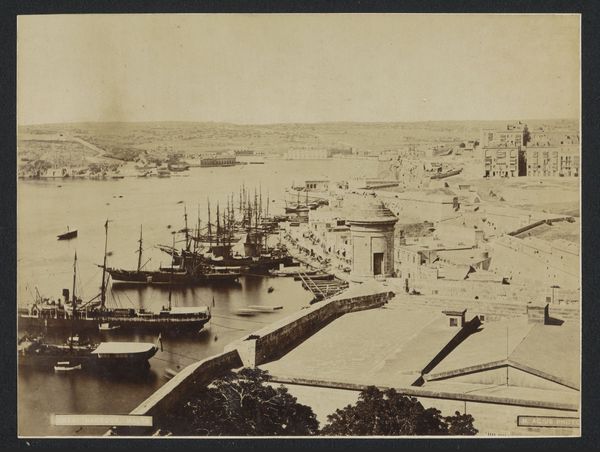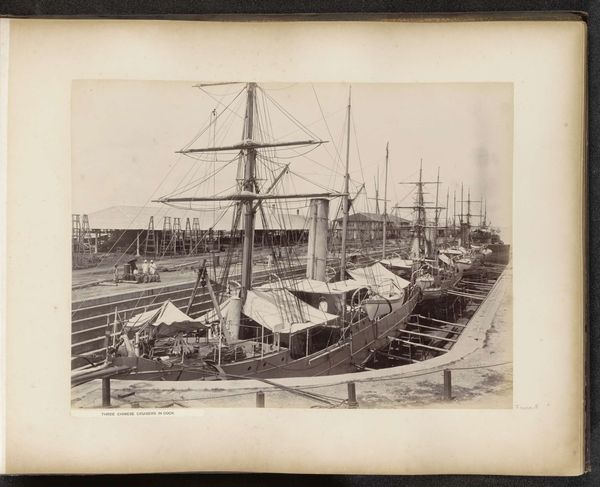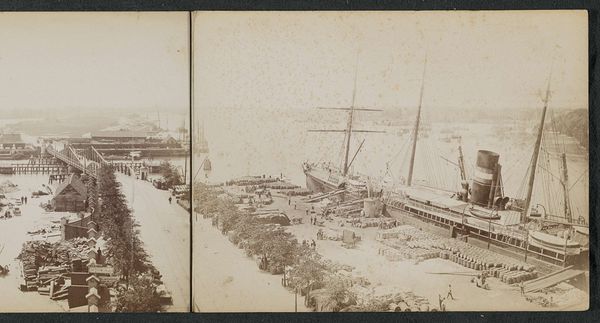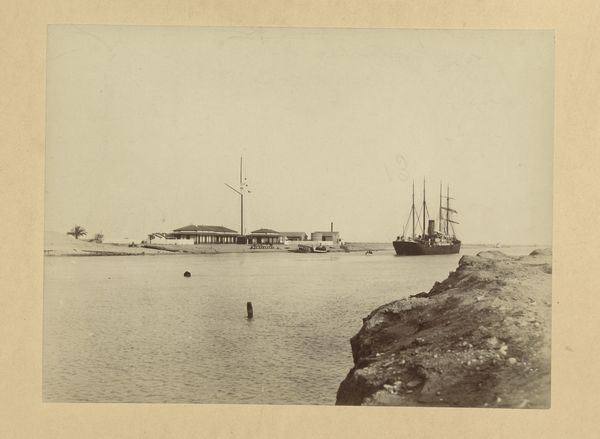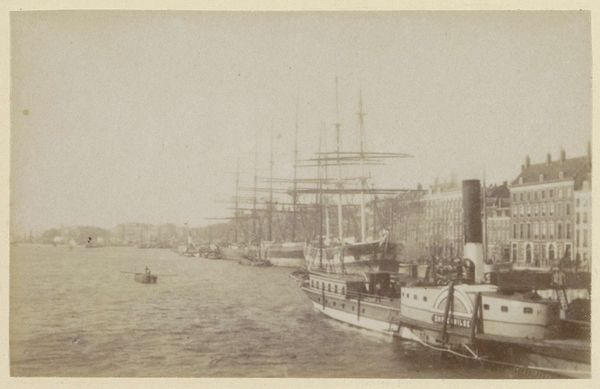
photography, albumen-print
ship
landscape
outdoor photograph
photography
cityscape
albumen-print
Dimensions: height 198 mm, width 277 mm
Copyright: Rijks Museum: Open Domain
Curator: Ah, "Gezicht op de haven van Port Said met schepen en vuurtoren"—or, "View of the Port Said harbor with ships and lighthouse." It’s a photograph, likely an albumen print, by Hippolyte Arnoux, placing us somewhere between 1870 and 1891. Editor: It feels...dusty. In a romantic way, of course. It's the kind of sepia-toned dream that speaks of voyages, faraway lands, and untold stories resting on the waves. Curator: Yes, Arnoux beautifully captures a sense of transition, doesn’t he? The large stone breakwater anchors the foreground, constructed, most likely, of material dredged during the construction of the Suez canal. And it leads the eye to that burgeoning maritime activity further inland. Editor: All that movement held in such stark stillness... It strikes me as an almost brutal depiction of the Victorian appetite for progress. Just look at those hulking ships compared to the two people casually wading. Is nothing sacred from industry? Curator: Industry fueled artistry. Note how the vantage point itself highlights human modification of this coastal landscape. The photograph underscores engineering, the new docks, even that looming lighthouse -- all enabled by resource extraction. Editor: And at what cost? Consider that material itself. Look closely at the construction materials -- stone with clear markings incised on their faces, surely numbering or instructions for laborers... They suggest exploited manpower, an unseen story beneath all the high-seas adventuring. Curator: Indeed. Perhaps that’s precisely why Arnoux focused so intently on framing the artificial infrastructure—the lens almost becomes an extension of that ambitious, colonial vision. Editor: Right. Arnoux gives us a romanticized vision. But as the modern viewer, our vantage point lets us pull back, reassess what kind of "progress" he so earnestly believed he was seeing. What narratives are quietly obfuscated? Curator: It reminds us to always question whose stories we see, and whose labor built the very world reflected in those narratives. Editor: Makes you think, doesn’t it?
Comments
No comments
Be the first to comment and join the conversation on the ultimate creative platform.
